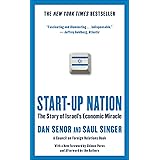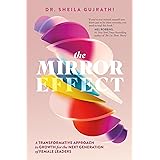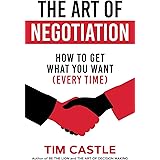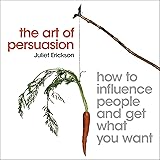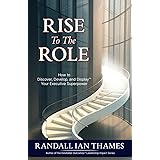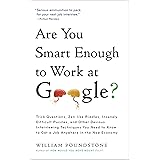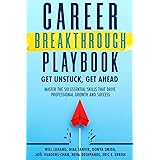Are you tired of sifting through generic resume advice that feels more subjective than scientific? Many job seekers feel the frustration of applying best practices only to find their efforts don’t yield the desired results. What if there was a data-driven approach to crafting an incredible resume, one that removes the guesswork and provides proven principles for standing out?
The video above delves into groundbreaking findings from Austin Belcak’s analysis of 125,484 resumes, offering a rare glimpse into what truly works. Far from personal opinion, this research uncovers foundational truths that can transform your job search, whether you are writing your very first resume or refining one you’ve used for years. We’ll explore these key learnings in detail, providing actionable strategies to elevate your professional document and significantly boost your interview rates.
Optimizing Your LinkedIn Profile for Enhanced Visibility
One of the most striking findings from the extensive resume analysis is the impact of a LinkedIn profile. While resumes with a LinkedIn link generally saw higher interview rates, a surprising data point emerged: only 48% of the analyzed resumes actually included one. This statistic alone highlights a significant opportunity for many job applicants to gain an edge.
However, the research further revealed a crucial nuance: simply including a link to a bare-bones or basic LinkedIn profile can actually decrease your chances of a callback. Consequently, the quality of your LinkedIn presence is paramount. An incredible resume partners effectively with a strong, comprehensive LinkedIn profile. This typically includes a professional headshot and banner, a thoroughly informative work detail section that mirrors and expands upon your resume, and evidence of meaningful connections within your industry. For those just starting out, remember that the impact of a robust LinkedIn profile is often even more significant for entry-level job seekers compared to their higher-level peers.
Mastering Resume Keywords and Skills for Applicant Tracking Systems
In today’s competitive job market, an incredible resume must navigate the complexities of Applicant Tracking Systems (ATS). These automated systems scan resumes for specific keywords and experiences, filtering out candidates before a human ever sees their application. The research indicates that the average job description contains approximately 43 keywords, yet most candidates only match about 51% of these on their resumes—meaning roughly 20 keywords are missed.
To overcome this, a strategic approach to keyword integration is essential. Utilizing free online word cloud tools can be incredibly effective; simply copy and paste the job description to identify the most frequently used terms. These keywords should then be woven into your resume naturally, not merely stuffed. Furthermore, the study highlighted a significant disparity in how candidates present skills: 60% of necessary hard skills were included, but only 28% of soft skills. Hard skills like Excel, Python, or SQL are often explicitly listed, but the subtle power of soft skills such as communication, problem-solving, or adaptability is frequently overlooked. Actively identifying and incorporating relevant soft skills, perhaps by referencing industry trends or reports, can significantly enhance your resume’s appeal to both ATS and human reviewers.
Quantifying Your Achievements for an Incredible Resume
Imagine if your achievements could speak for themselves, not just describe what you did, but how well you did it. The data confirms this advantage, with only 26% of resumes including five or more instances of measurable metrics. More alarmingly, 36% of resumes didn’t feature a single quantifiable result. Companies consistently favor resumes that present metrics because they make value easier to understand and quantify, painting a clear picture of your impact.
For instance, consider two content marketing managers. One states, “Responsible for planning and executing social media campaigns.” The other writes, “Drove 2,500 organic sign-ups to our monthly newsletter by A/B testing content layout and collaborating with co-marketing partners, representing a 43% quarter-on-quarter increase.” The latter, utilizing the X-Y-Z formula (Accomplished [X] as measured by [Y], by doing [Z]), undeniably stands out. Even if your role doesn’t directly impact revenue, you can quantify other contributions. For example, instead of saying “Improved internal tools,” you might state, “Enhanced company’s internal tools, leading to a 33% increase in productivity for the sales team, which translated to an estimated $X incremental revenue annually.” Such statements transform responsibilities into demonstrable achievements, making your incredible resume truly impactful.
The Goldilocks Zone: Ideal Resume Length and Structure
When it comes to resume length, “just right” isn’t a subjective opinion; it’s a data-backed sweet spot. Research indicates that resumes between 475 and 600 words saw double the interview rates compared to those falling outside this range. Despite this compelling evidence, a staggering 77% of the analyzed resumes either exceeded 600 words or fell short of 475. This suggests that simply adhering to this word count can automatically place you in a stronger position than the majority of candidates.
Therefore, it is crucial to review your resume’s length using word count tools in applications like Word or Google Docs. This focus on conciseness isn’t about keyword stuffing; it’s about strategic keyword inclusion and impactful writing. While this ideal length applies to most job seekers, it’s important to acknowledge exceptions. Highly experienced professionals, federal employees, academics, or C-level executives, for example, may require longer, multi-page CVs to comprehensively detail their extensive careers. However, for the vast majority, a targeted, impactful resume within the 475-600 word range significantly enhances its effectiveness and scannability, ensuring your incredible resume makes the best first impression.
Banishing Buzzwords and Clichés for Clear Communication
What makes a recruiter cringe more than a poorly formatted resume? A document riddled with buzzwords and clichés. The study revealed that a significant 51% of resumes included some form of these overused terms. While we all aspire to be “motivated” and “detail-oriented team-players” with “creative mindsets” who champion “synergies,” these phrases have lost all meaning due to their pervasive use. They are generic, uninformative, and ultimately detract from the unique message you’re trying to convey.
Think of it from a hiring manager’s perspective: reviewing dozens of resumes daily, these empty phrases become noise, not signal. An incredible resume focuses on selling your experience, not merely summarizing it with worn-out platitudes. To create a more compelling document, actively seek out and eliminate common resume clichés and buzzwords. Instead of saying you’re a “self-starter,” describe an instance where you initiated a project independently with positive results. Replace “strong communication skills” with a bullet point detailing how you effectively presented complex information to stakeholders, leading to successful project approvals. Your language should be precise, action-oriented, and focused on demonstrating your unique value, ensuring every word contributes to a powerful, engaging narrative.


